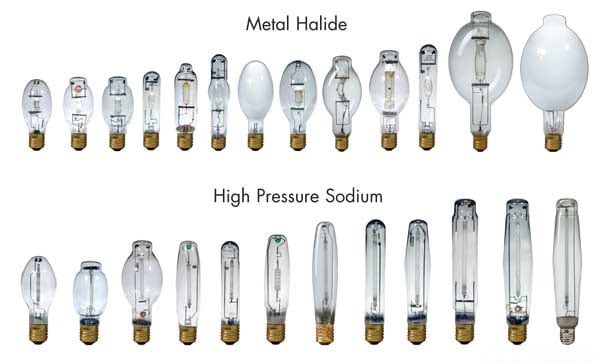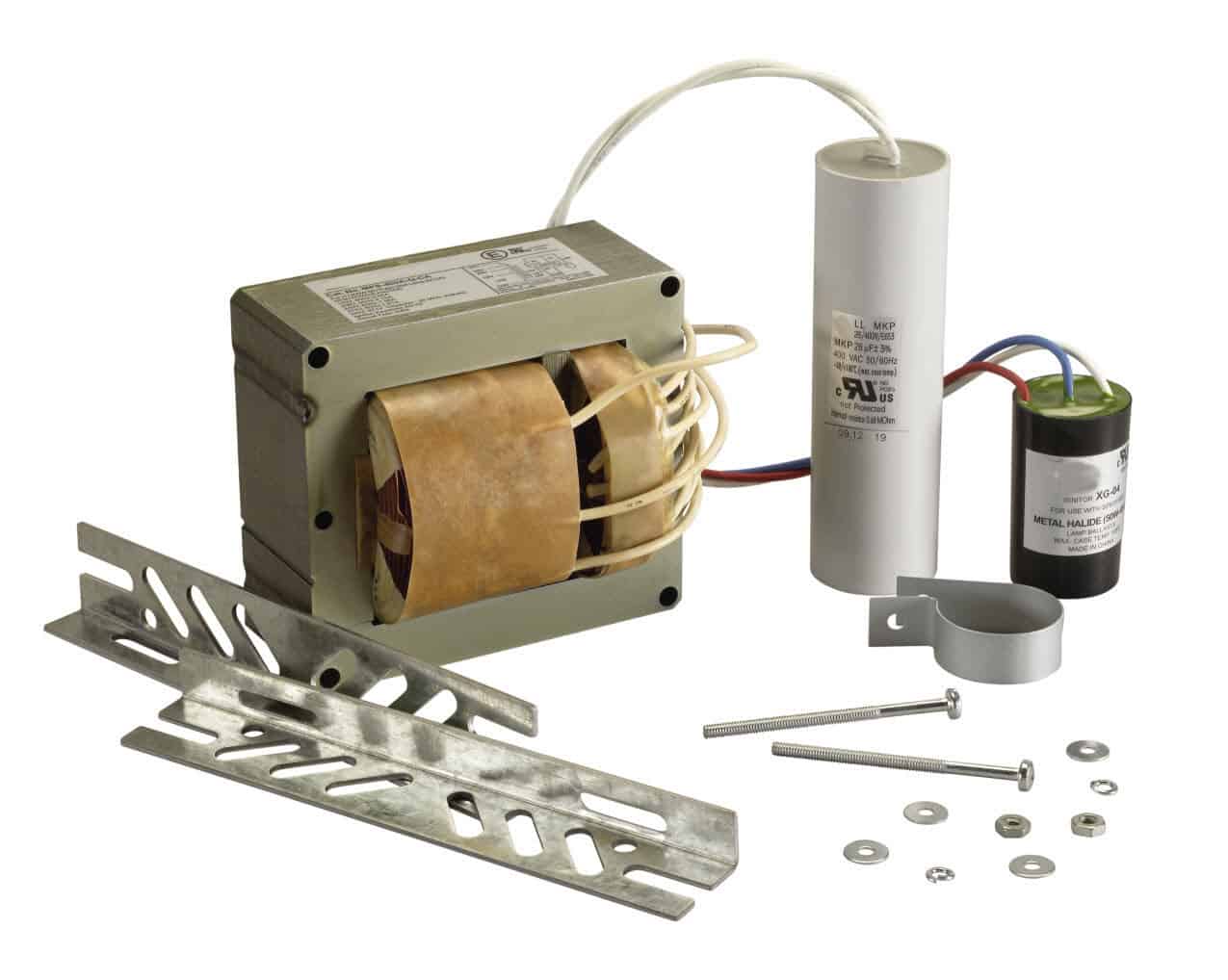Preheat 
The mercury vapor ballast for a preheat fixture (combined with a starter or power switch with a “start” position) is basically a series inductor. Interrupting current through the inductor provides the starting voltage.
The mercury vapor ballast for a rapid start fixture has in addition small windings for heating the filaments reducing the required starting voltage to 250 to 400 V. There are probably the most common types in use today. Trigger start fixtures are similar to rapid start fixtures.
Standard “probe-start” Quartz Metal Halide lamps are electrically similar to mercury
designs except that they require a higher starting voltage from the ballast. In order to
provide this, the ballast has to have larger magnetic components, which have the effect of
adding cost to the system and using more energy. An important element in the design of
the arc tube is the fill pressure.
Increasing the fill pressure results in better electrode
performance, improved lumen maintenance and longer life but on the negative side, it
makes starting the arc more difficult using a traditional magnetic ballast. Therefore, the
designer has to make compromises by limiting the fill pressure to be able to start the arc
while still providing good lamp performance. In a “Probe Start” lamp, a starter probe is
installed near one of the main electrodes to help in gas ionization during the first few
seconds of the starting cycle. After a short time, this starter probe is turned off using a
bimetal switch within the lamp that functions with the heat generated within the porcelain lamp holder.

